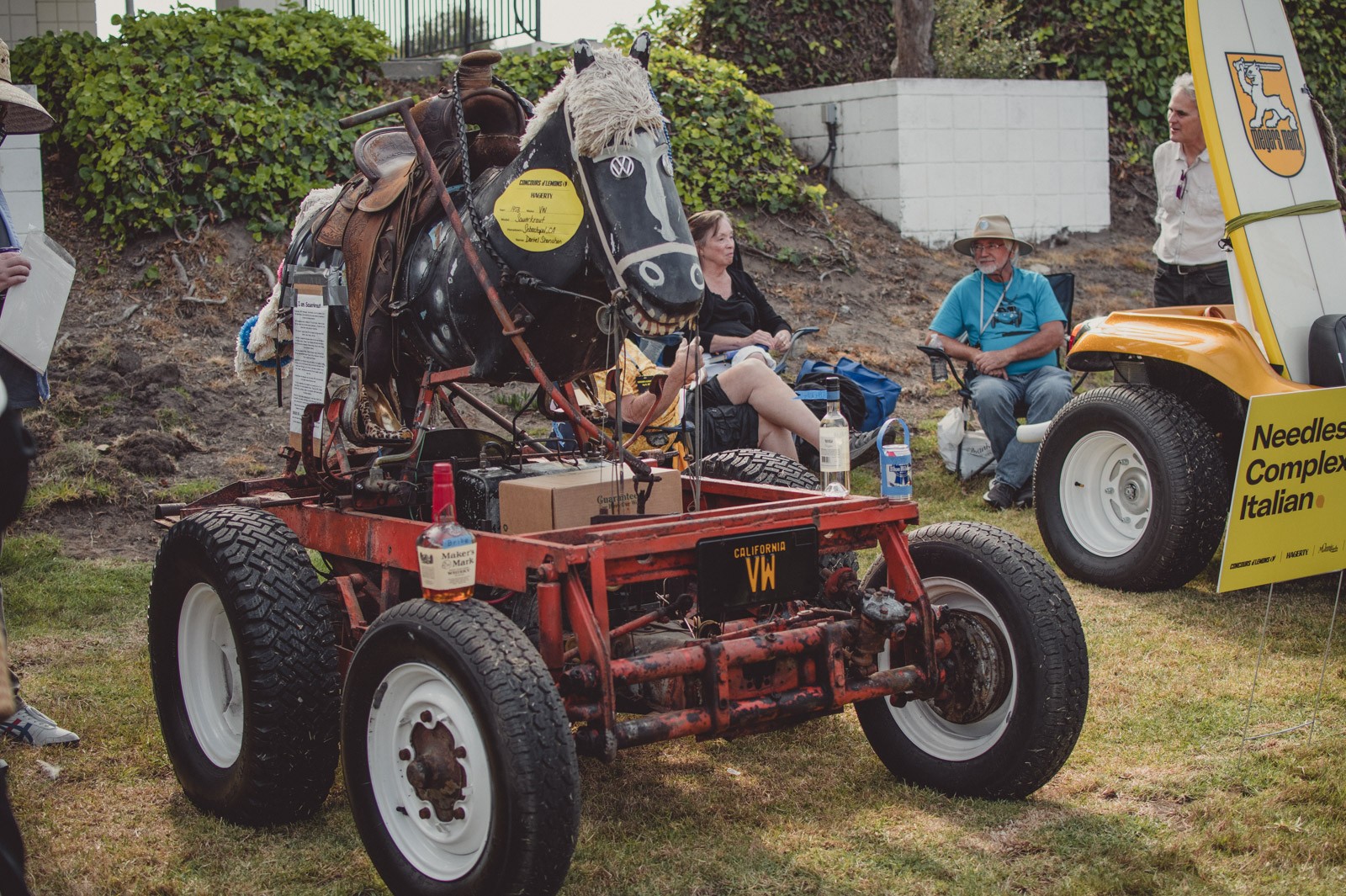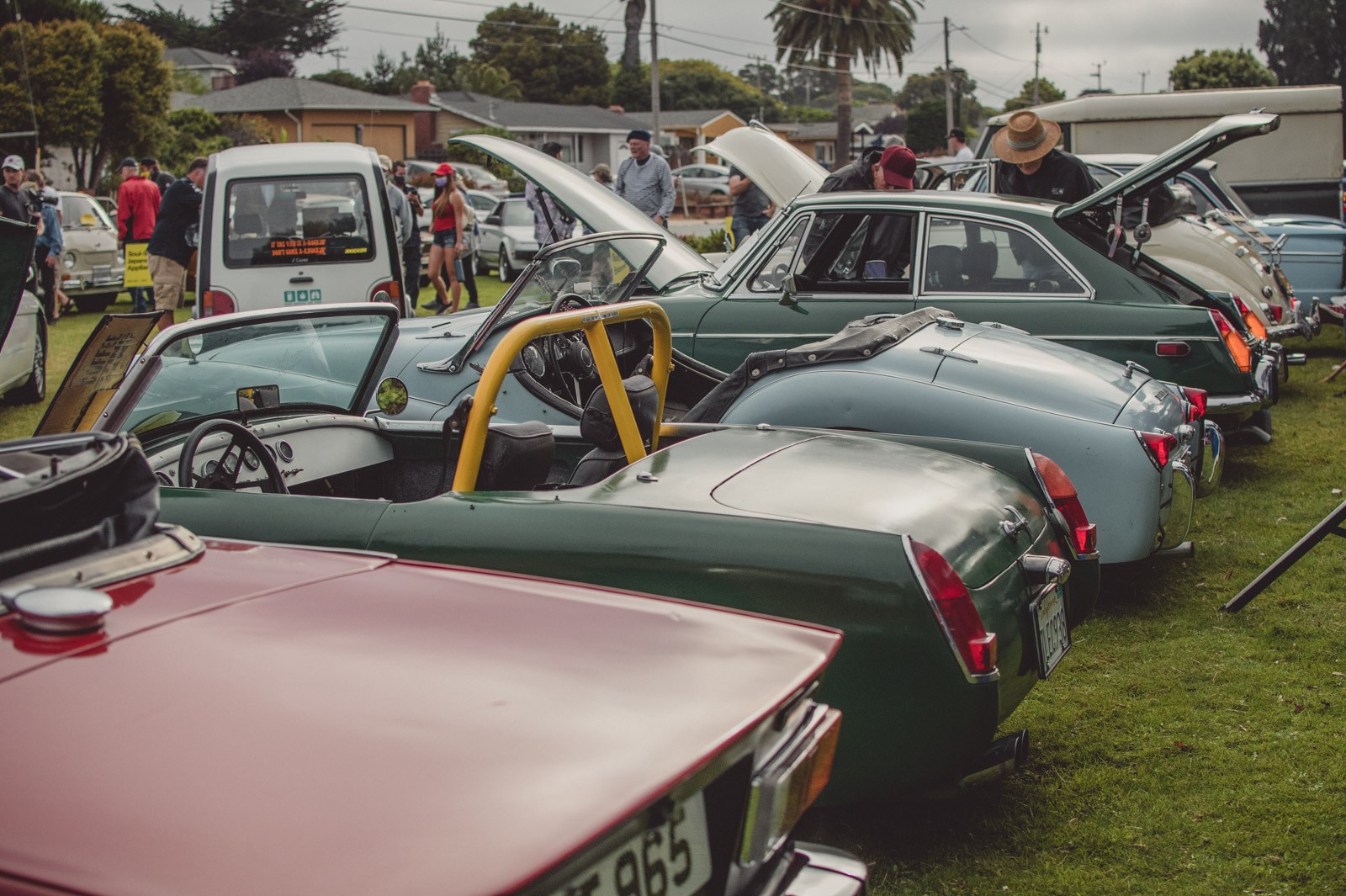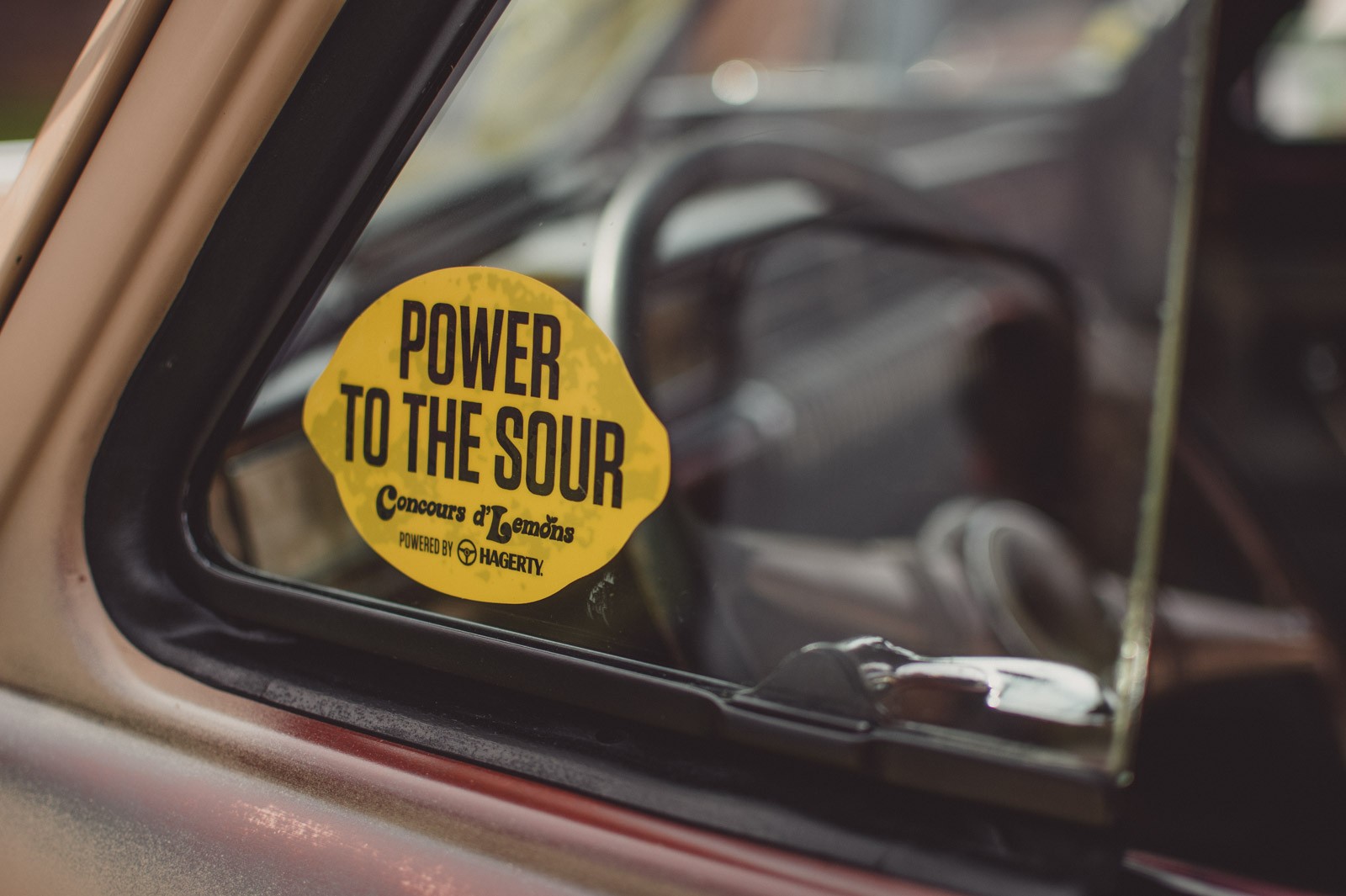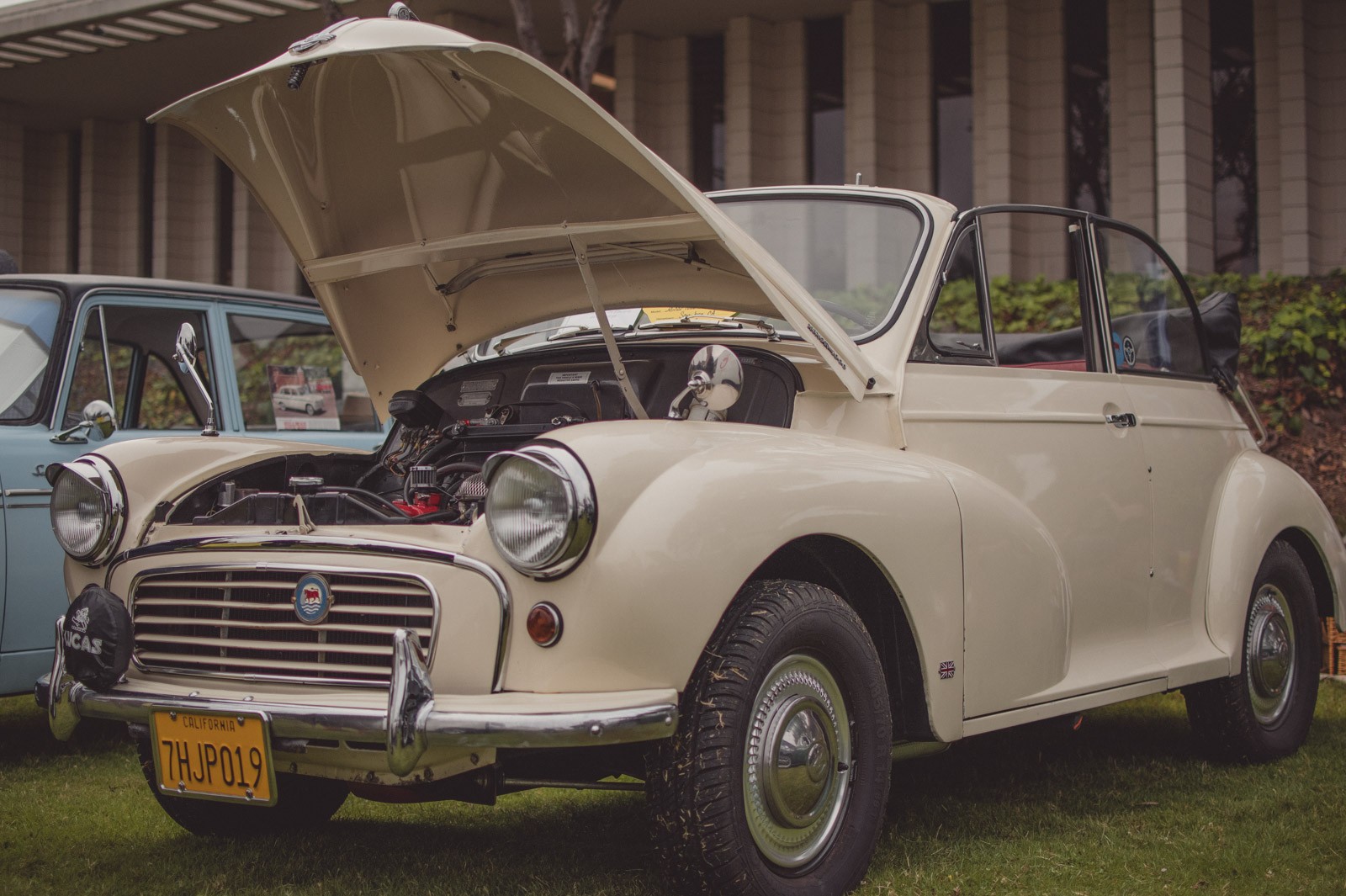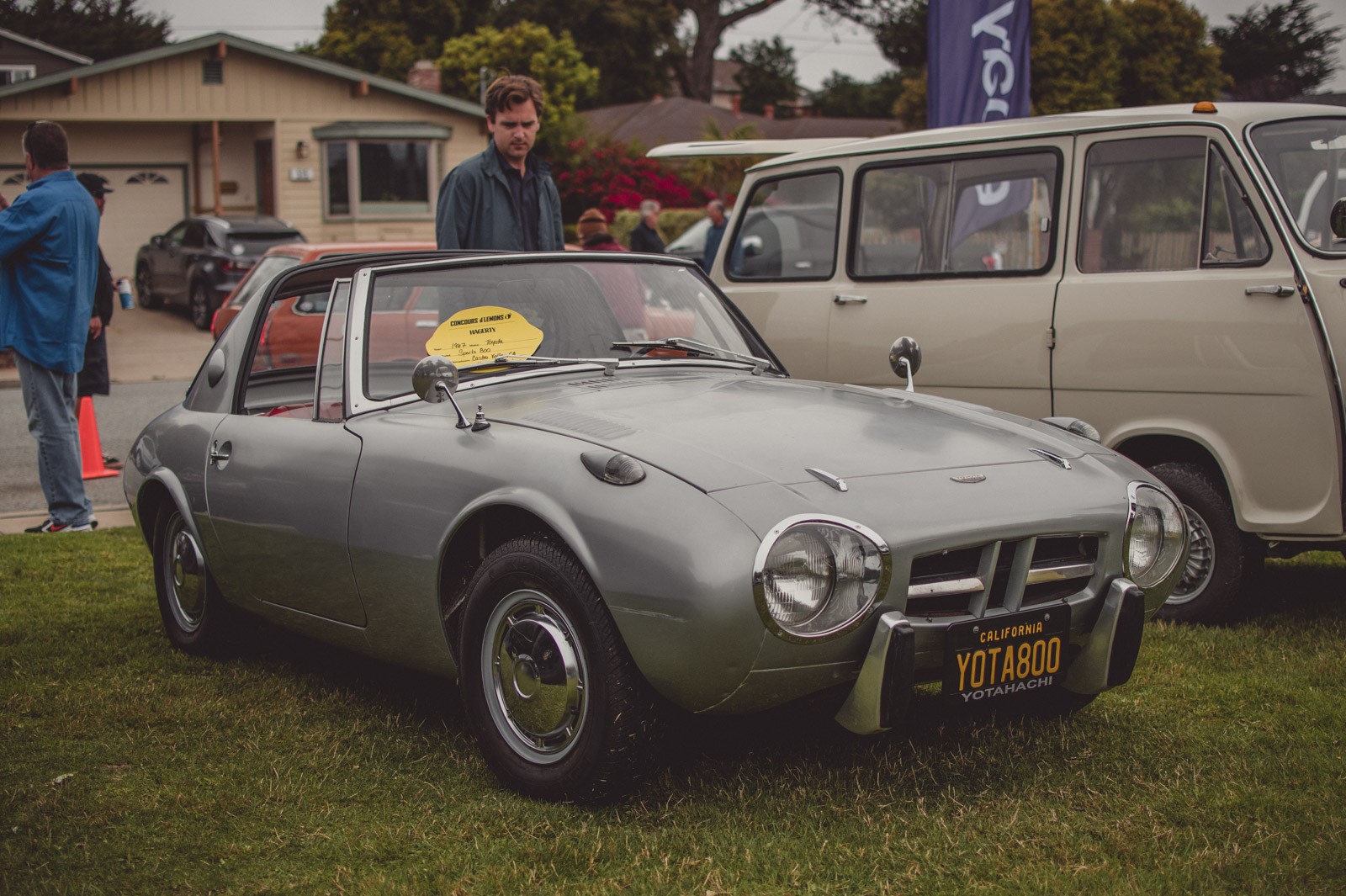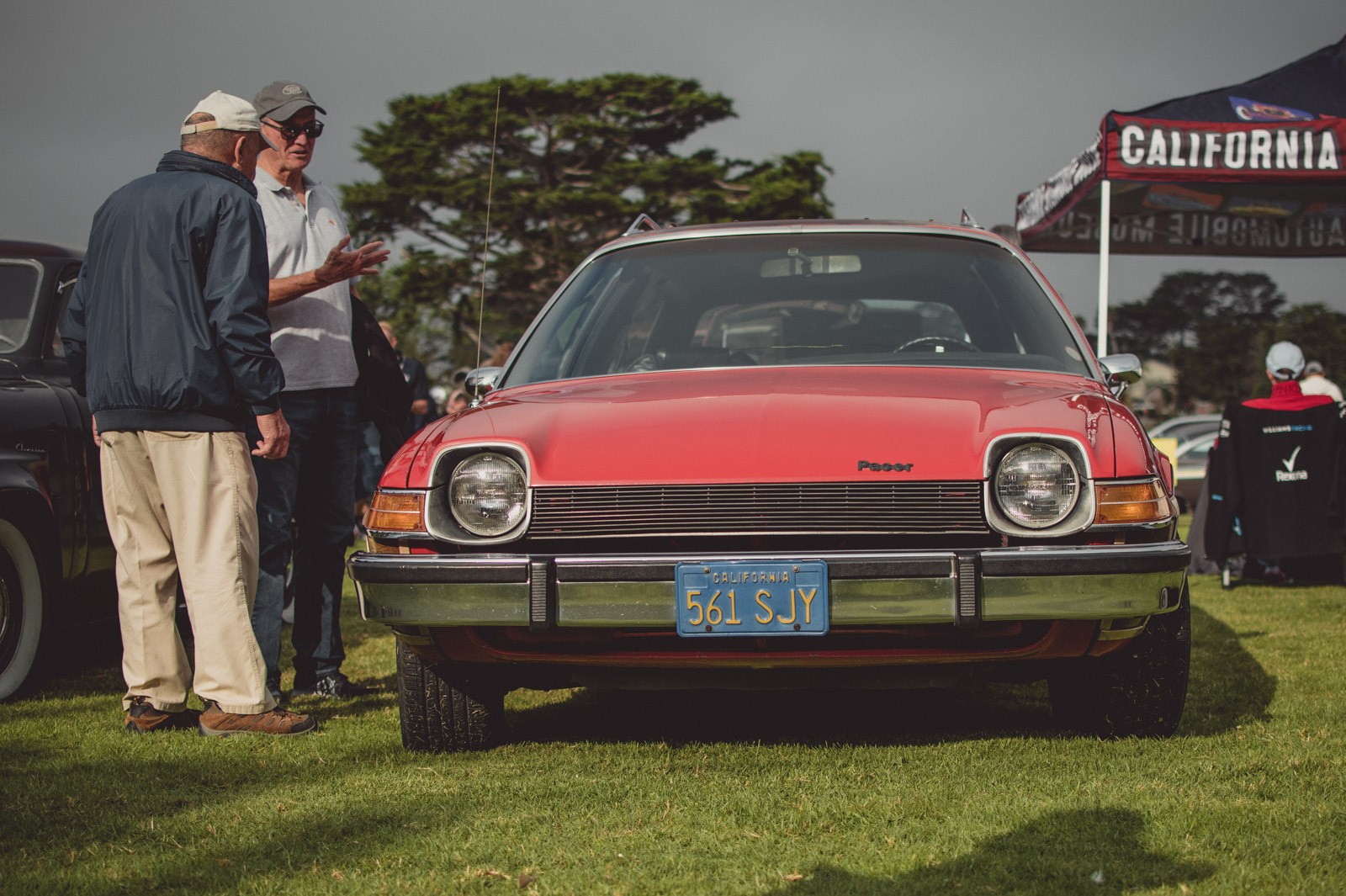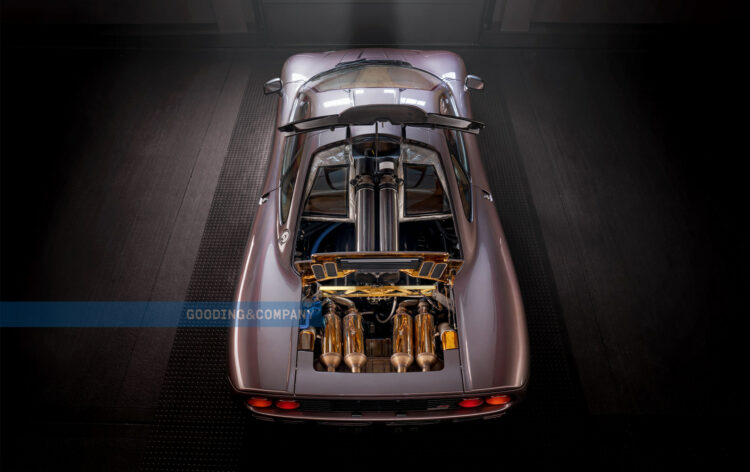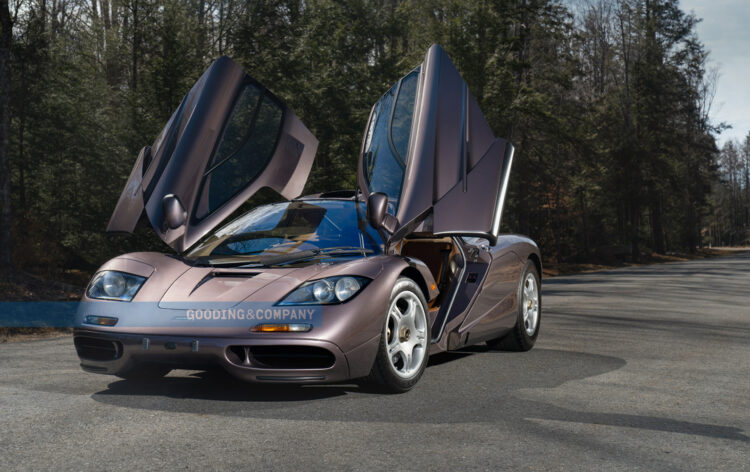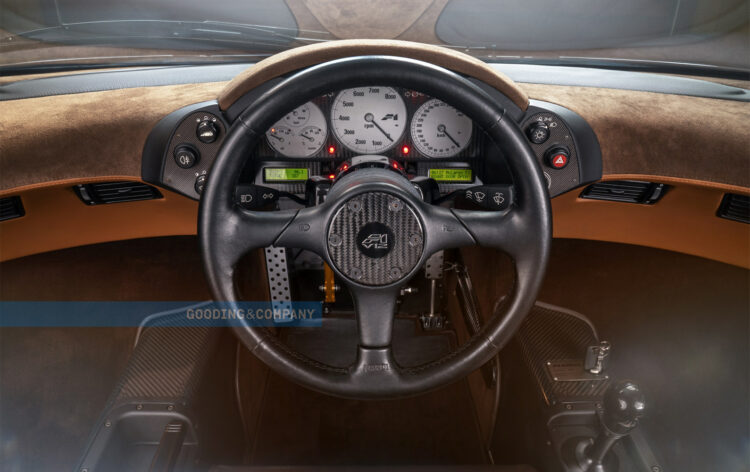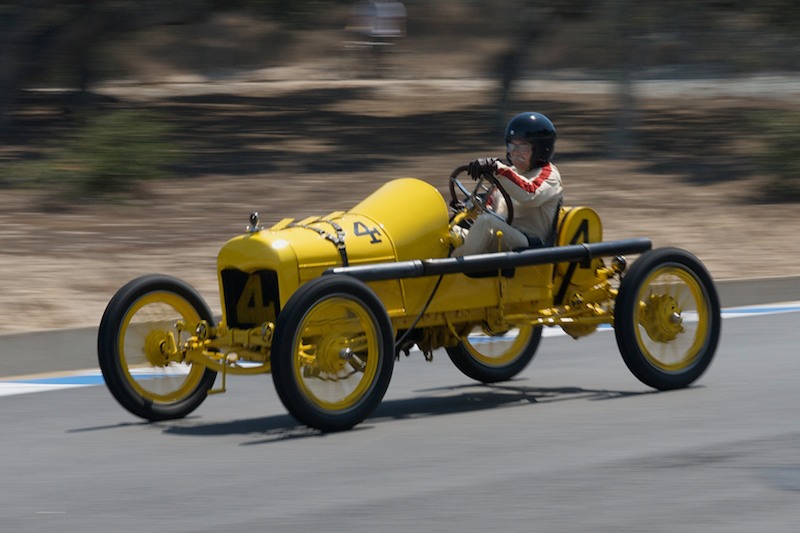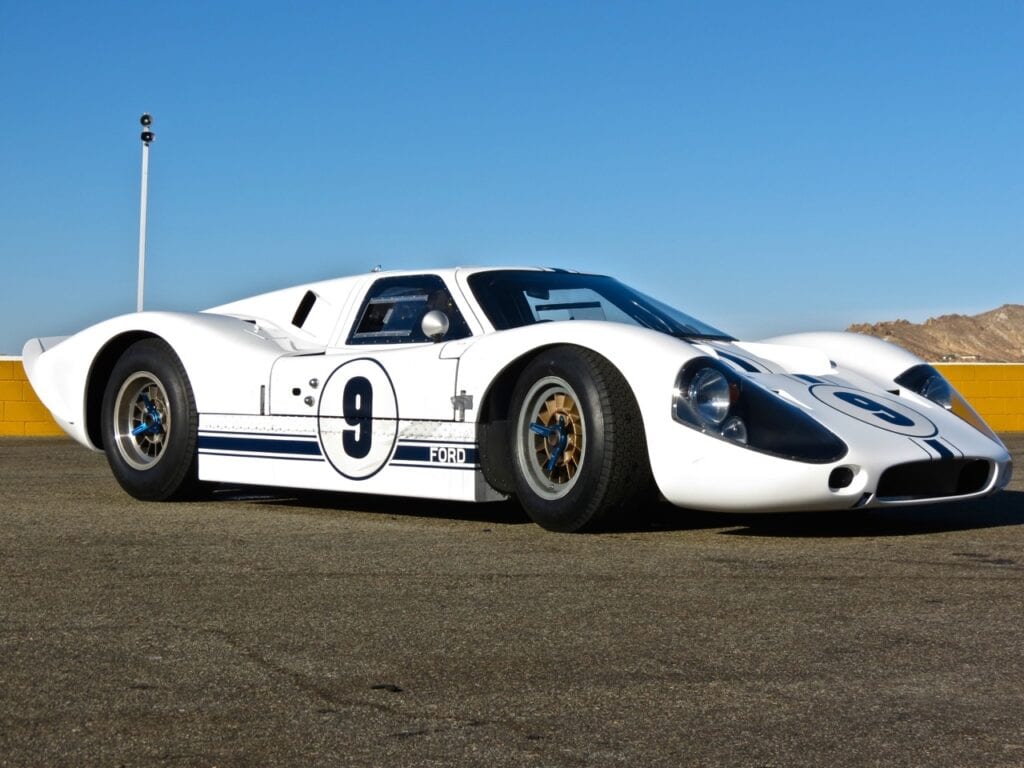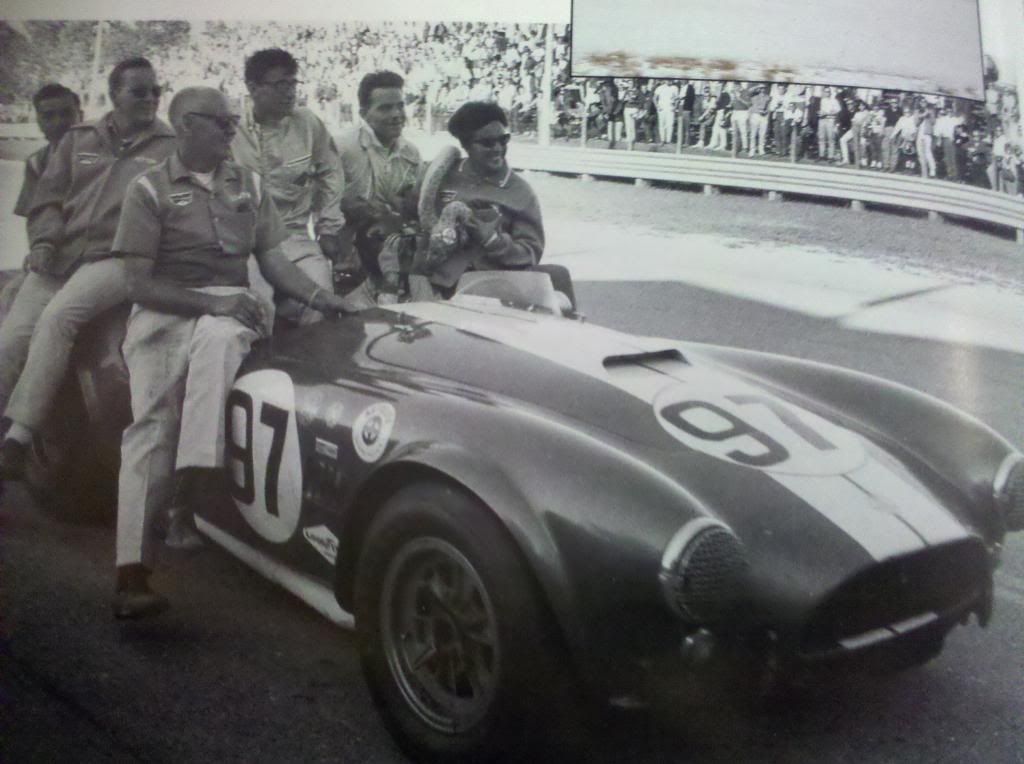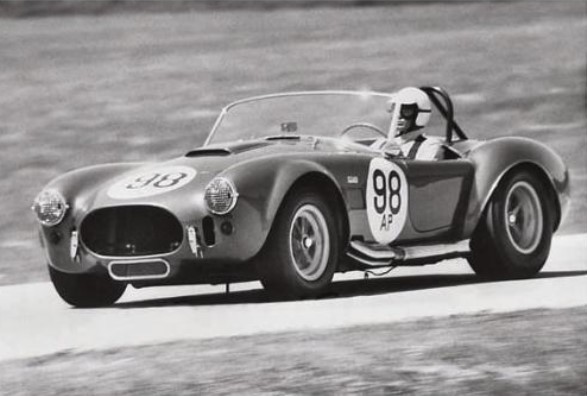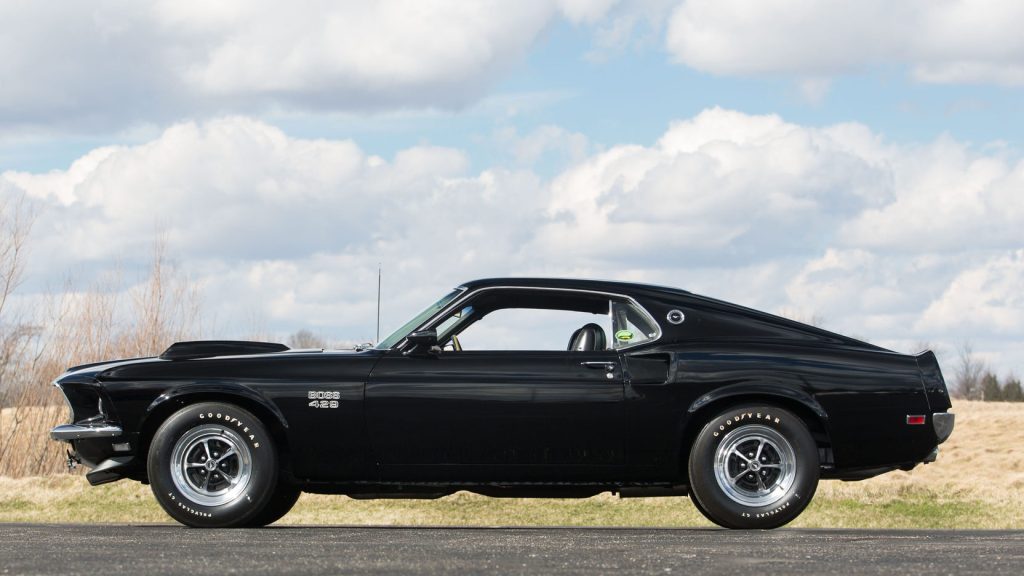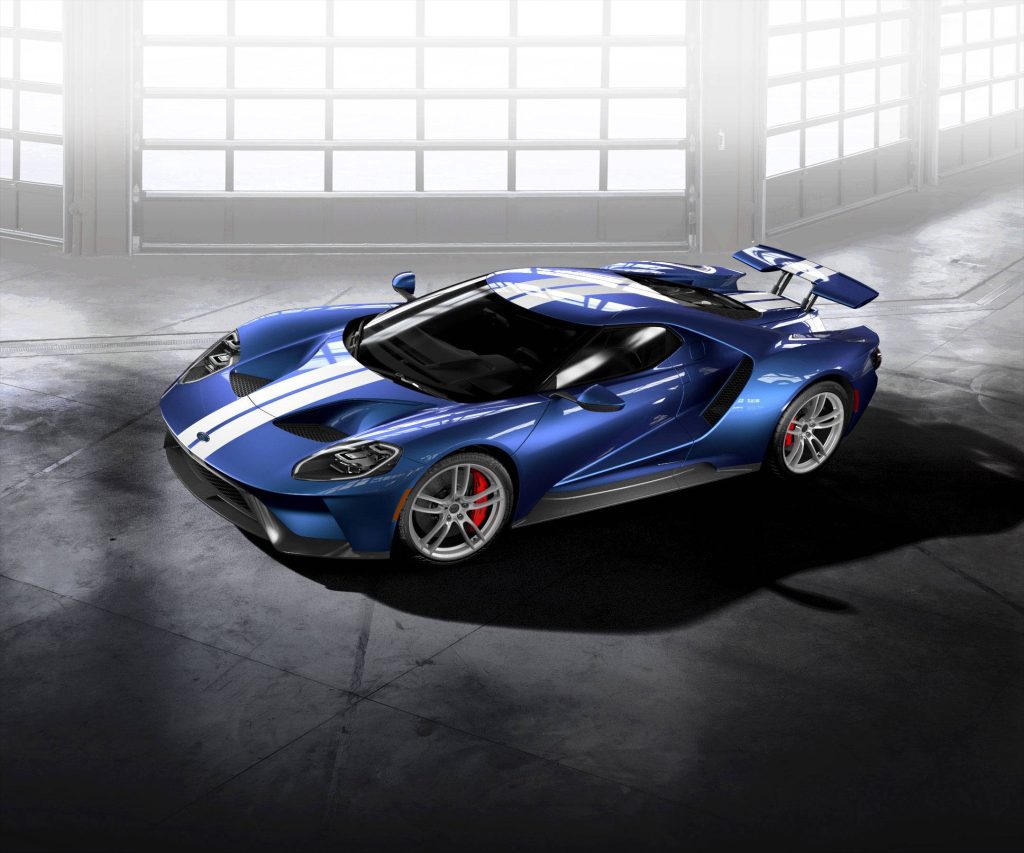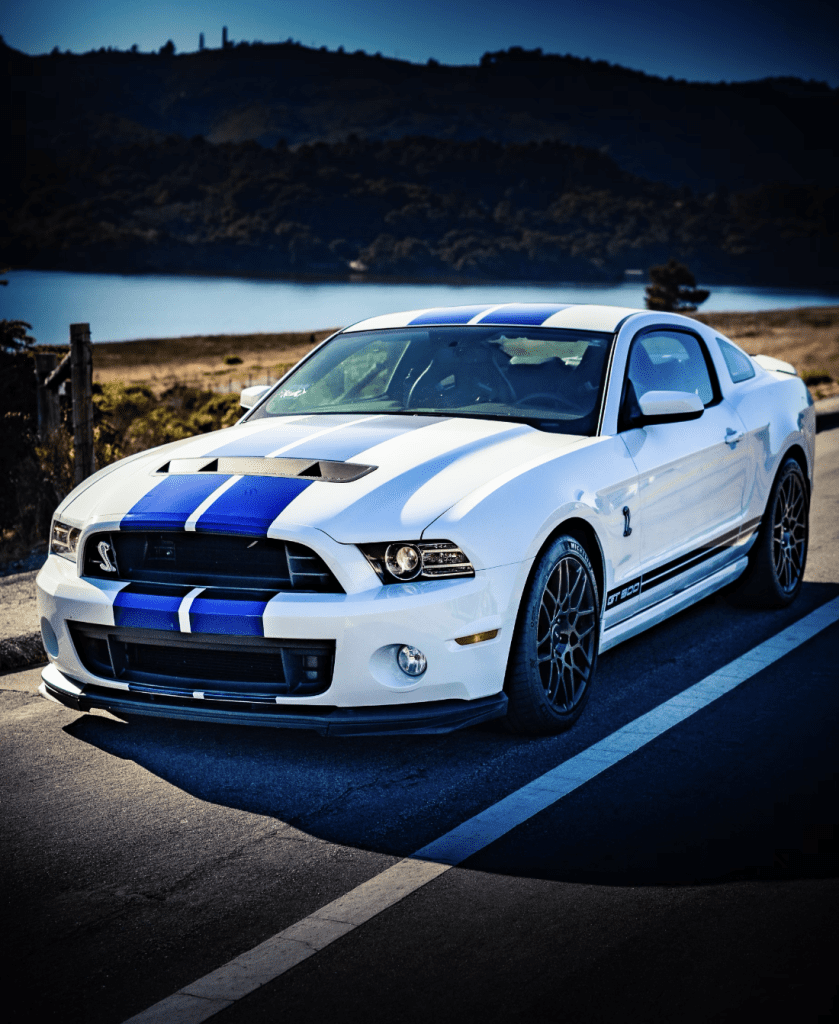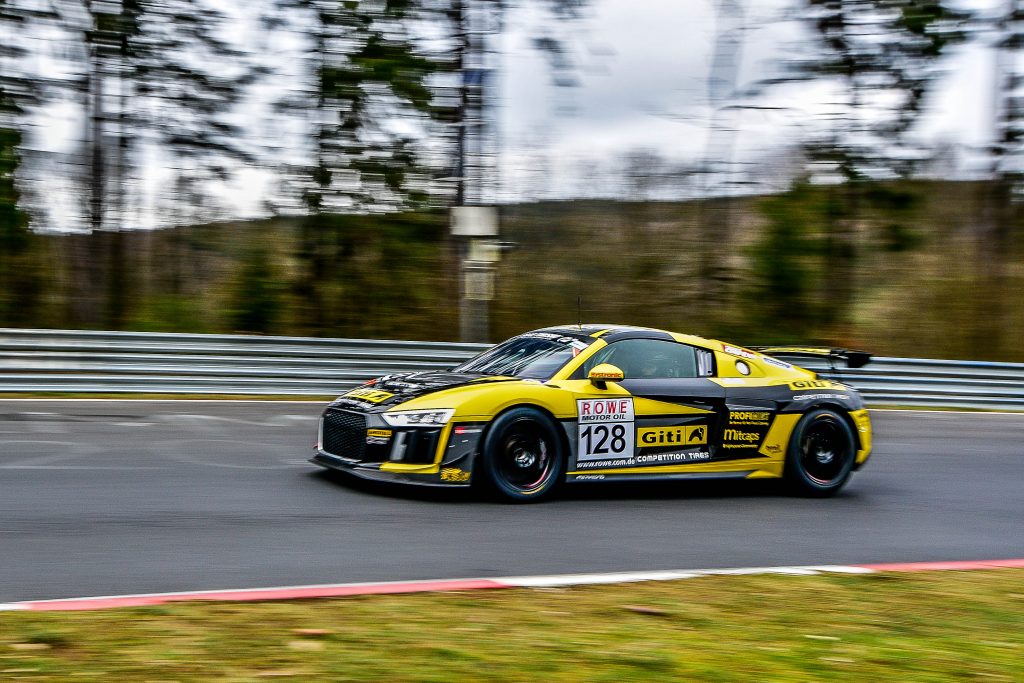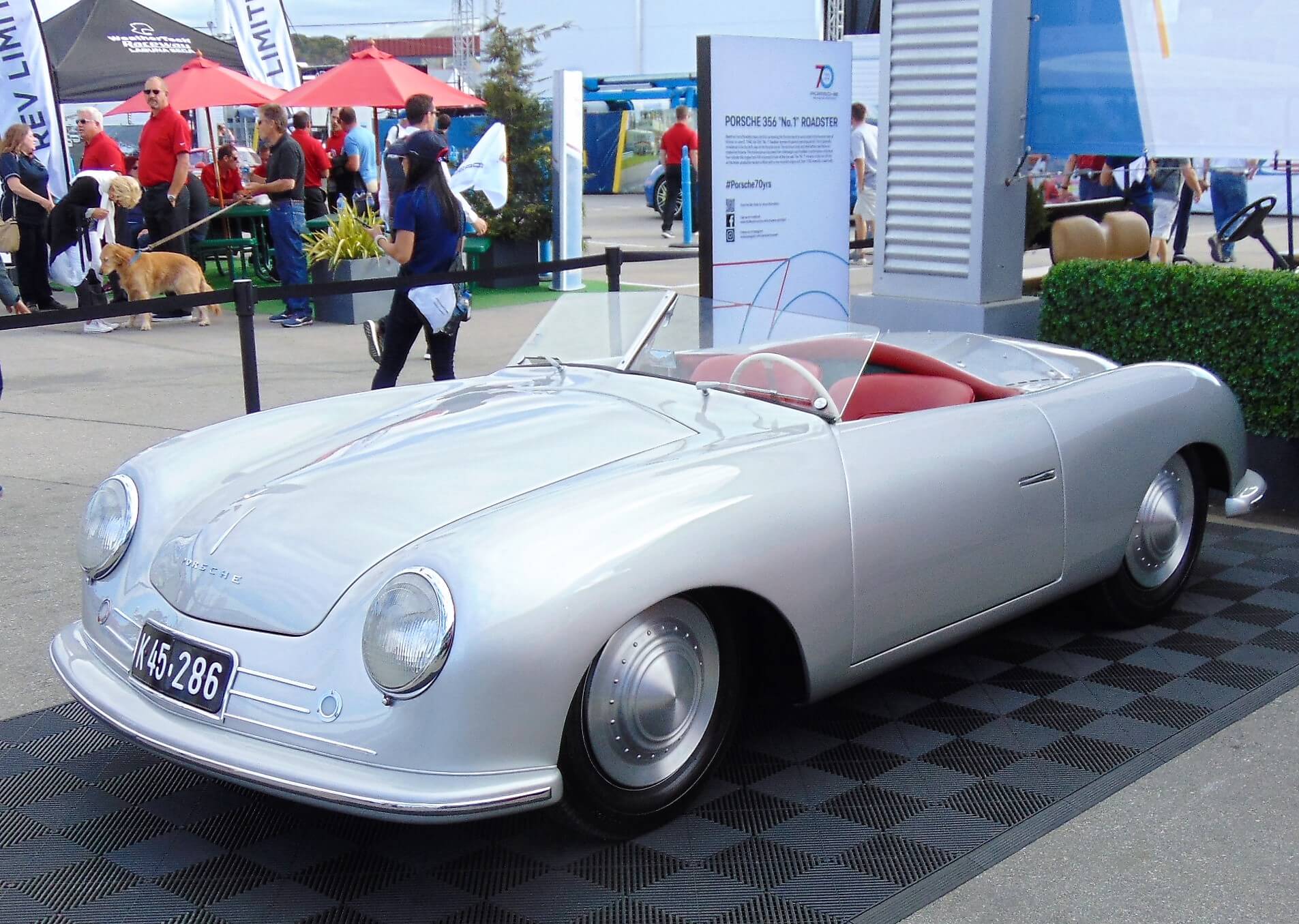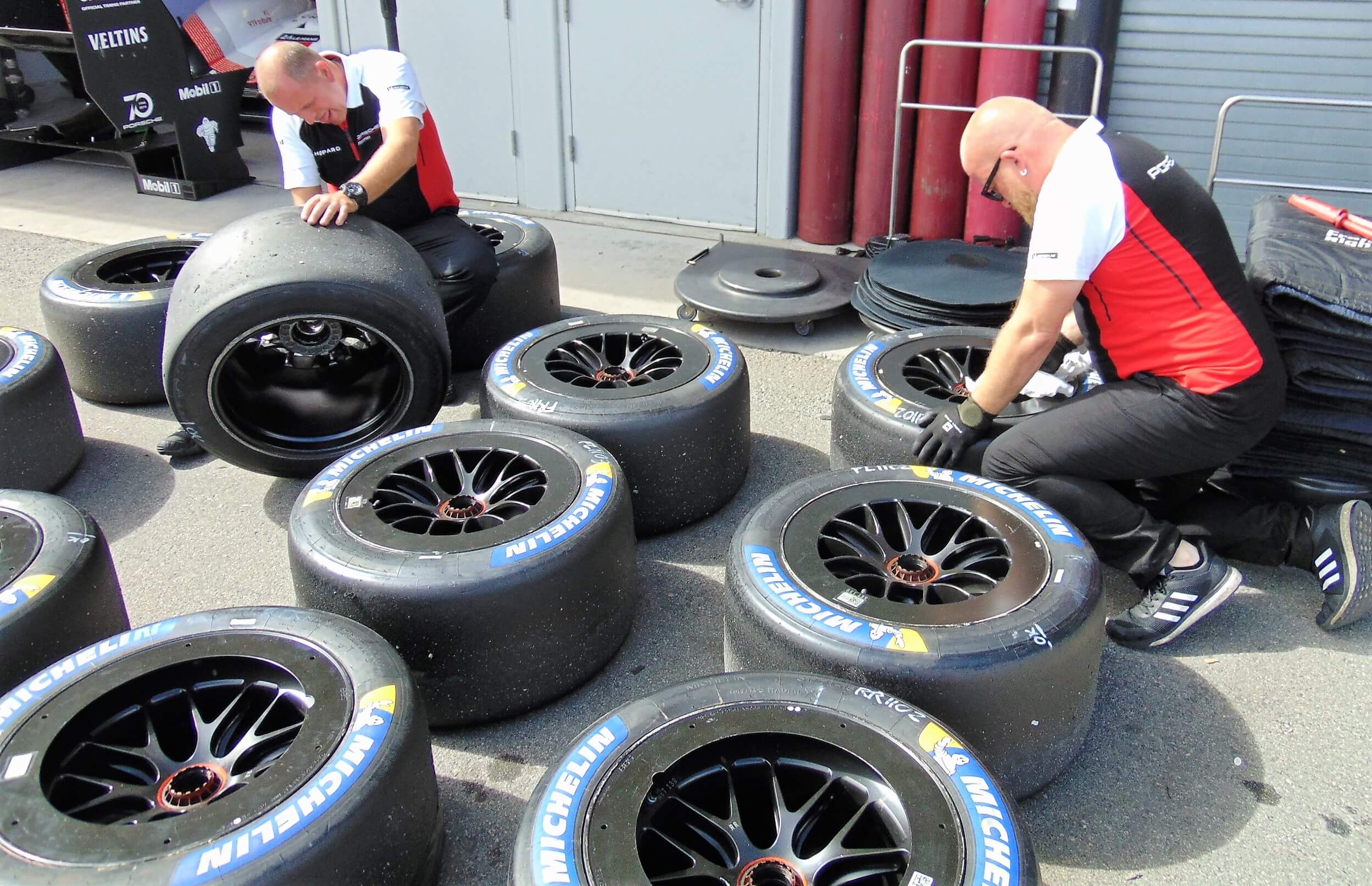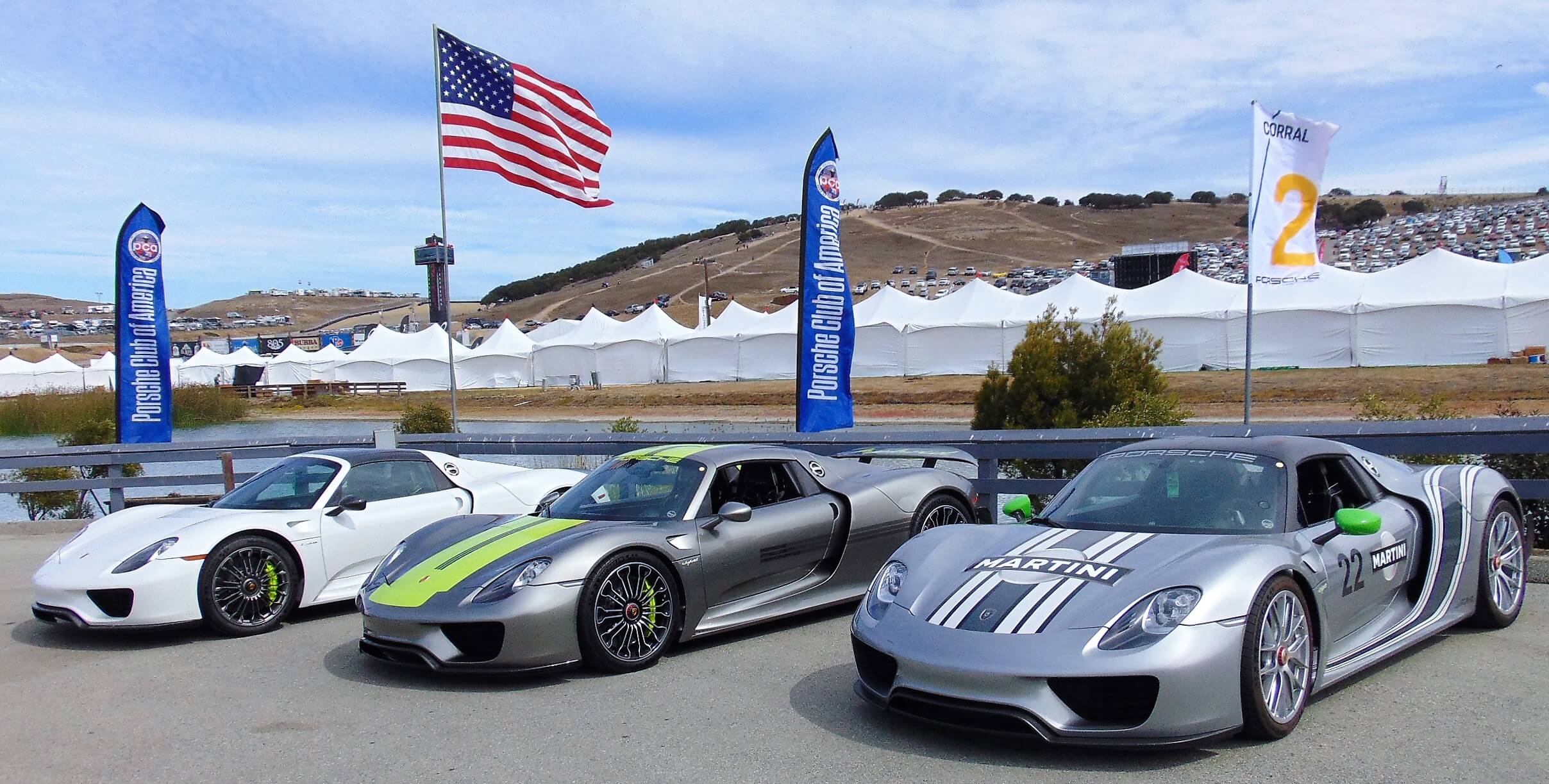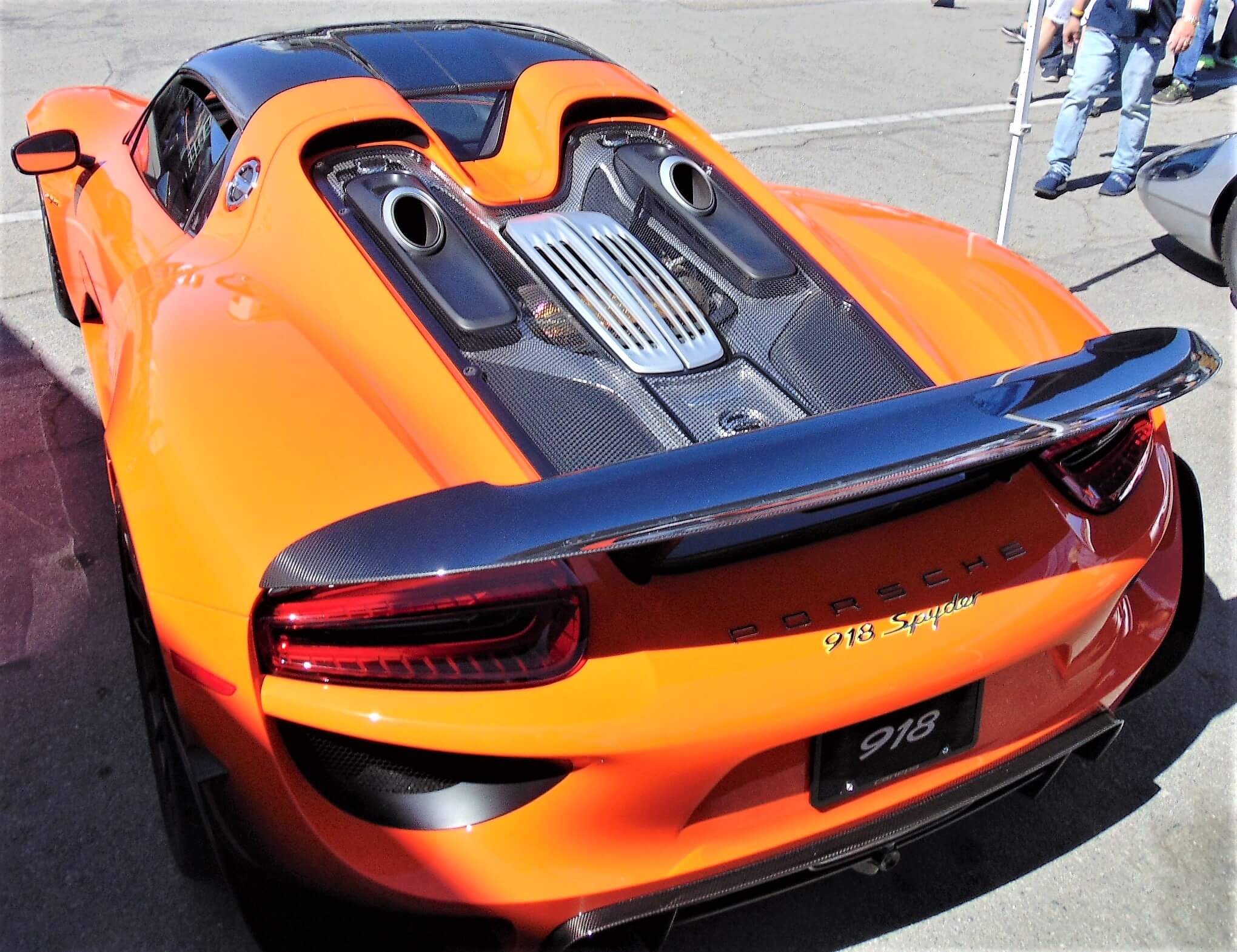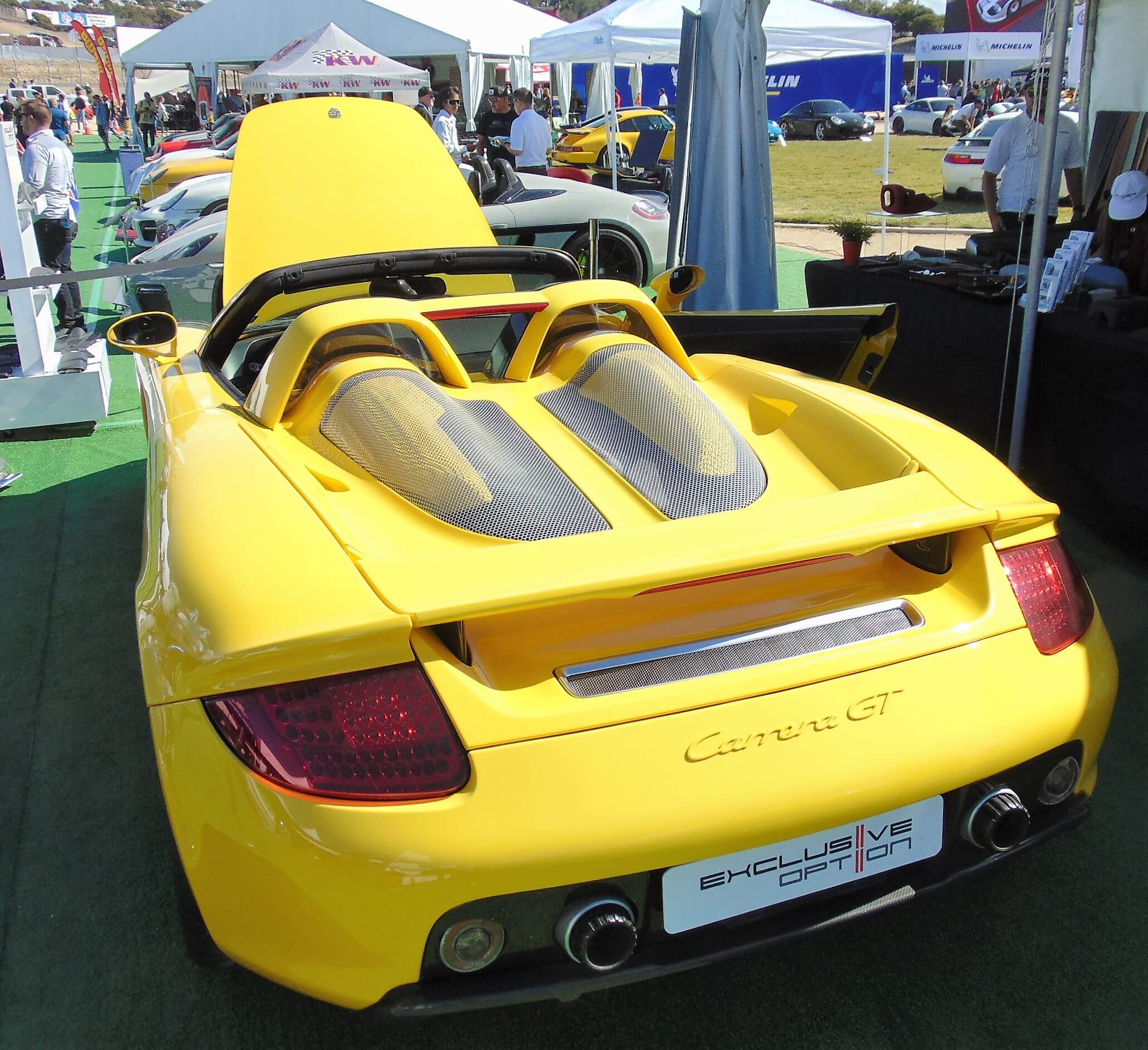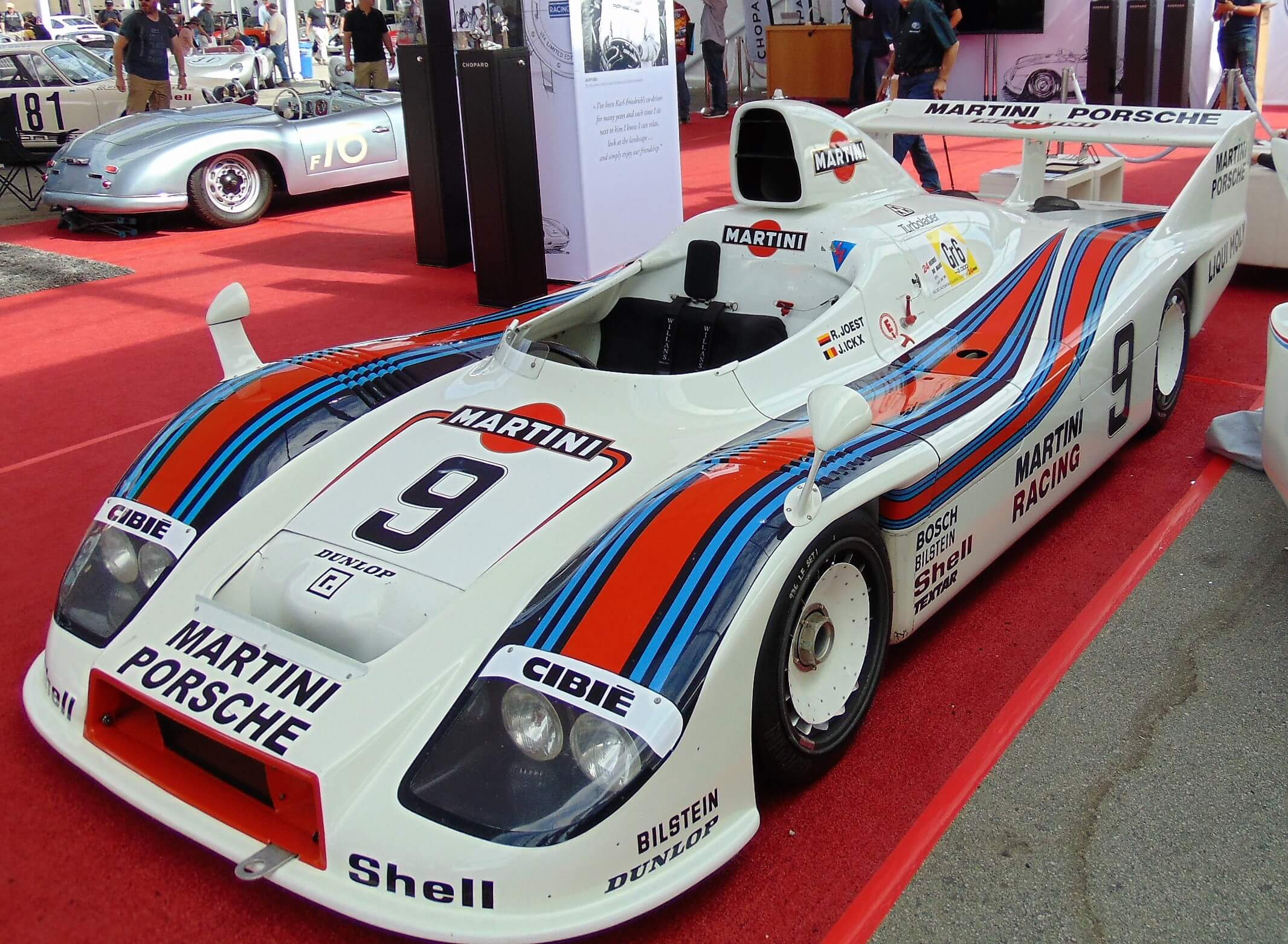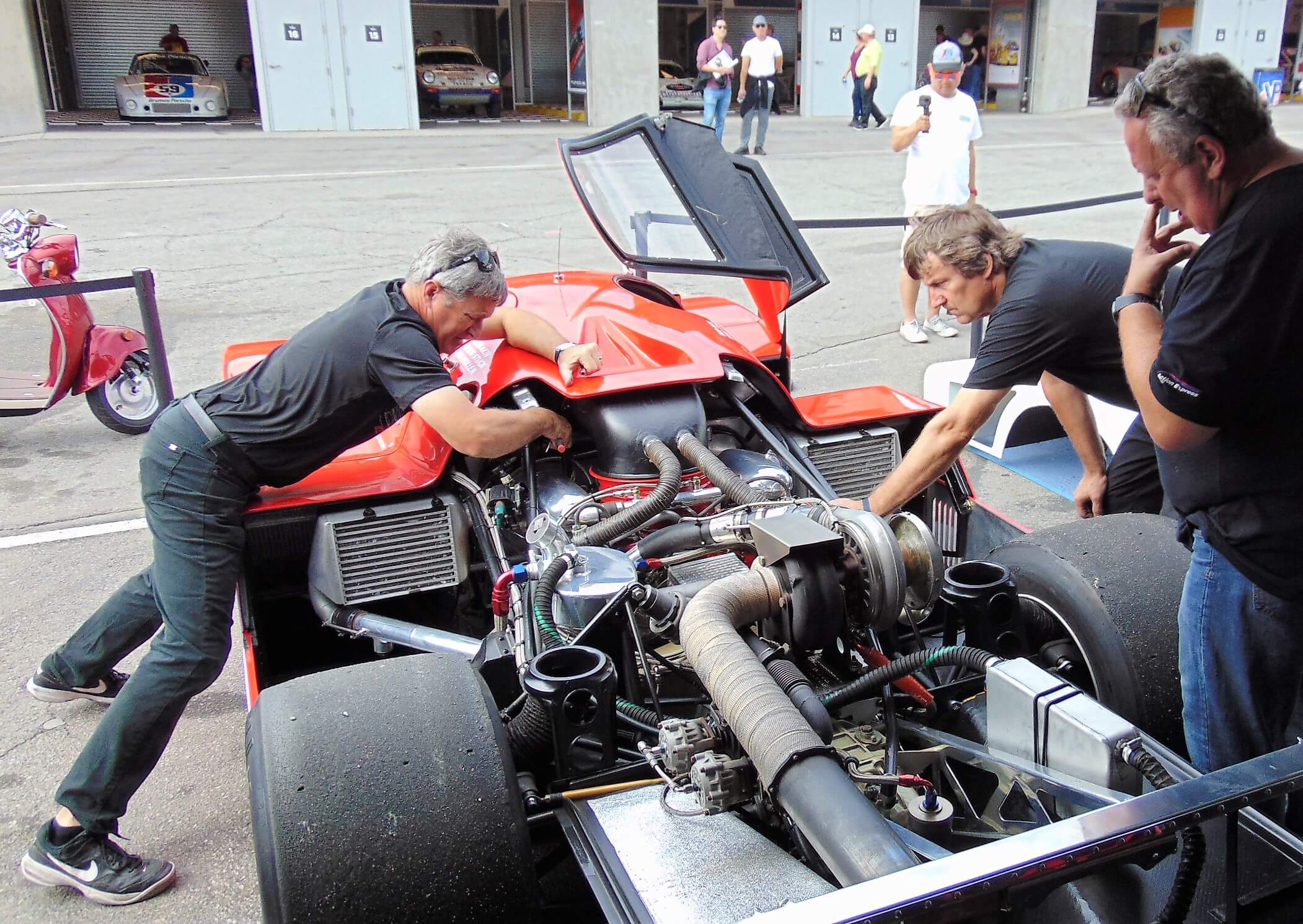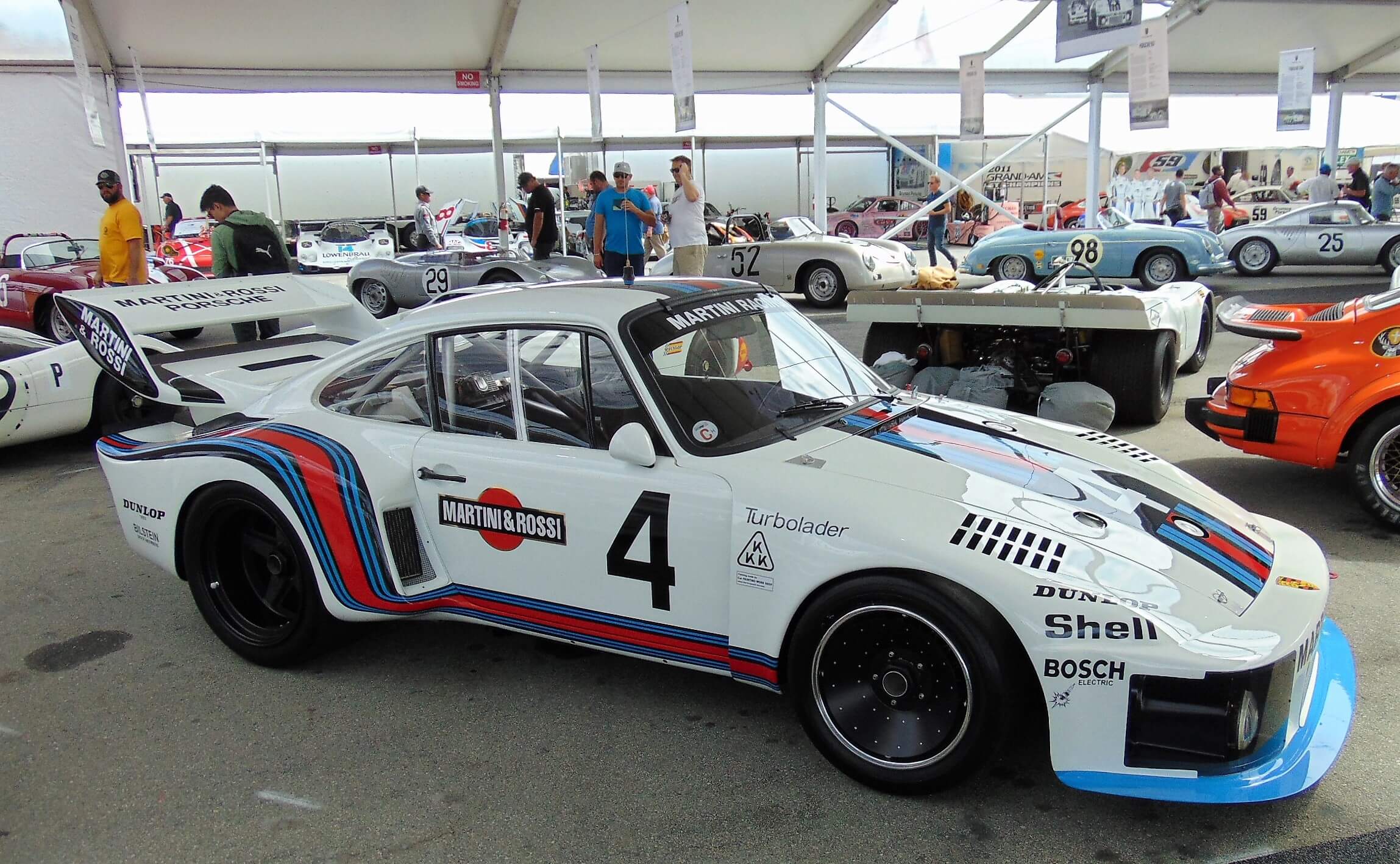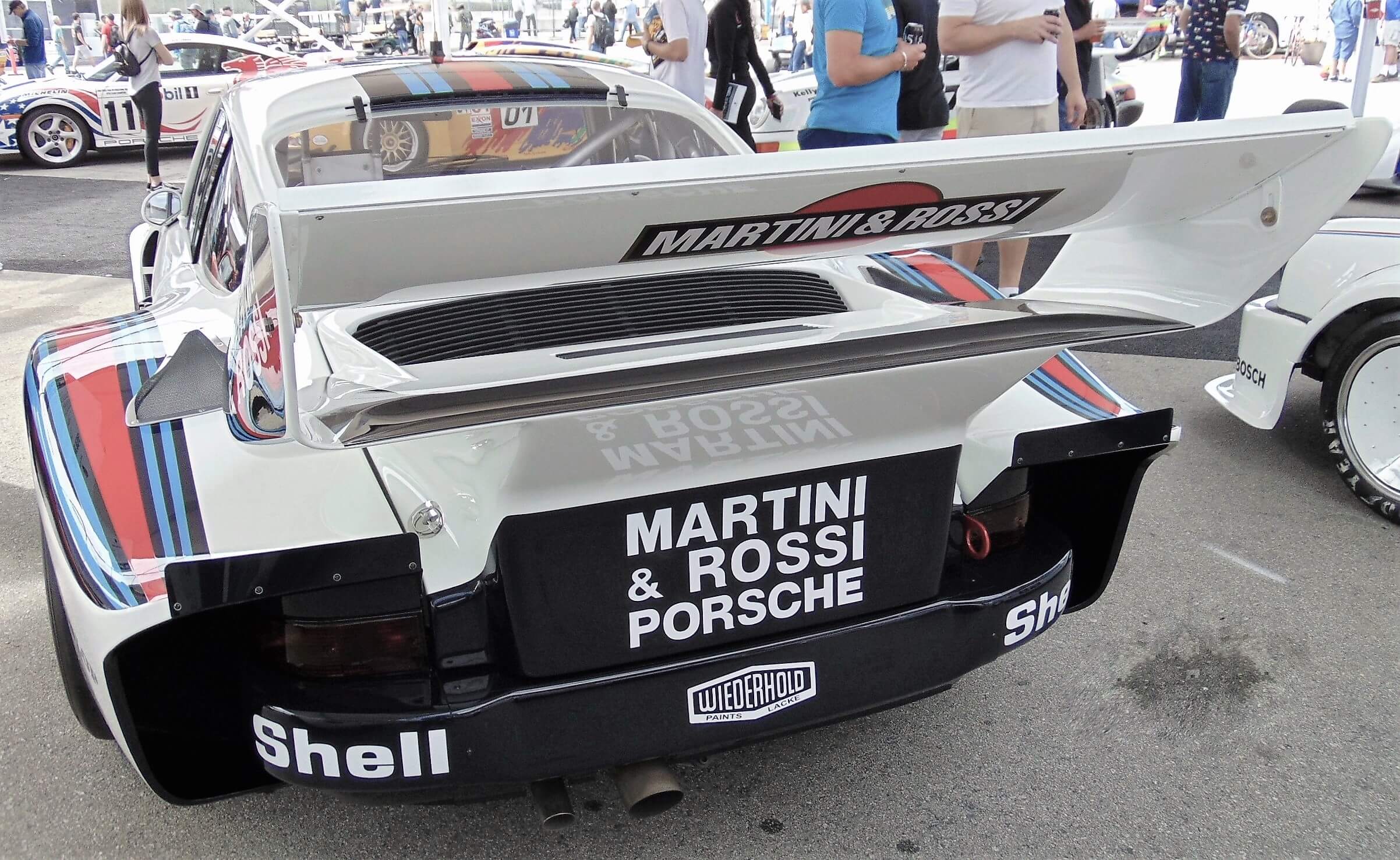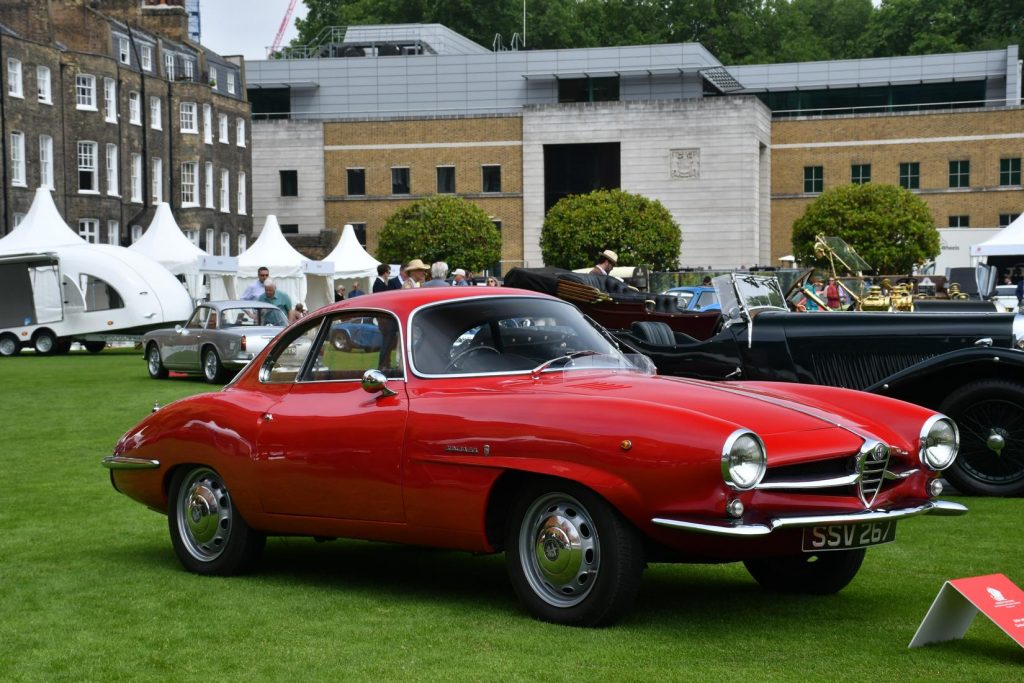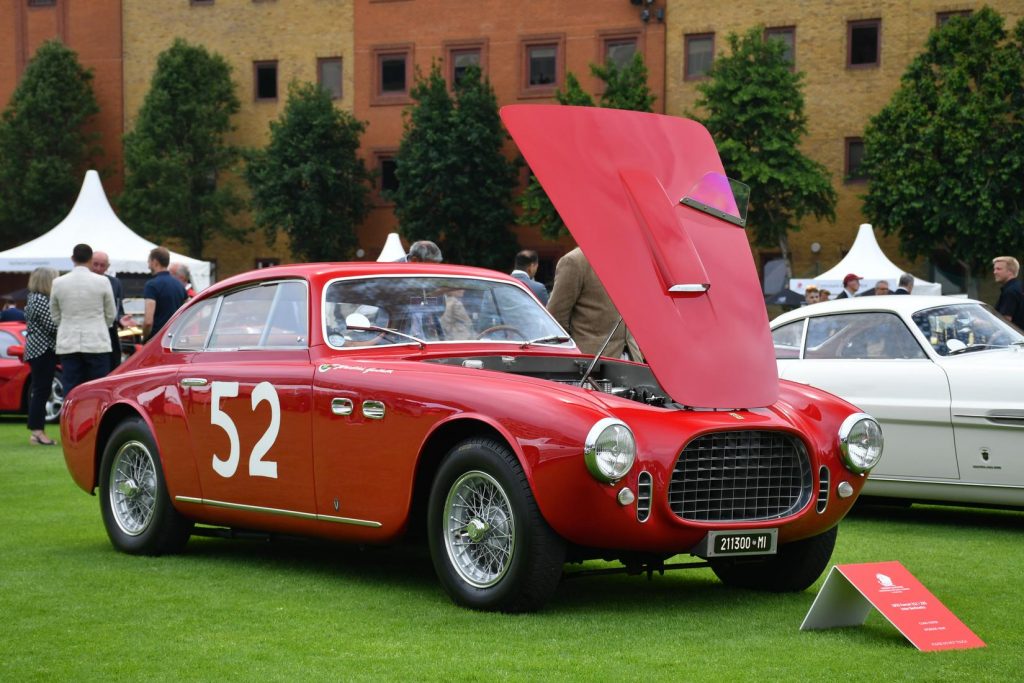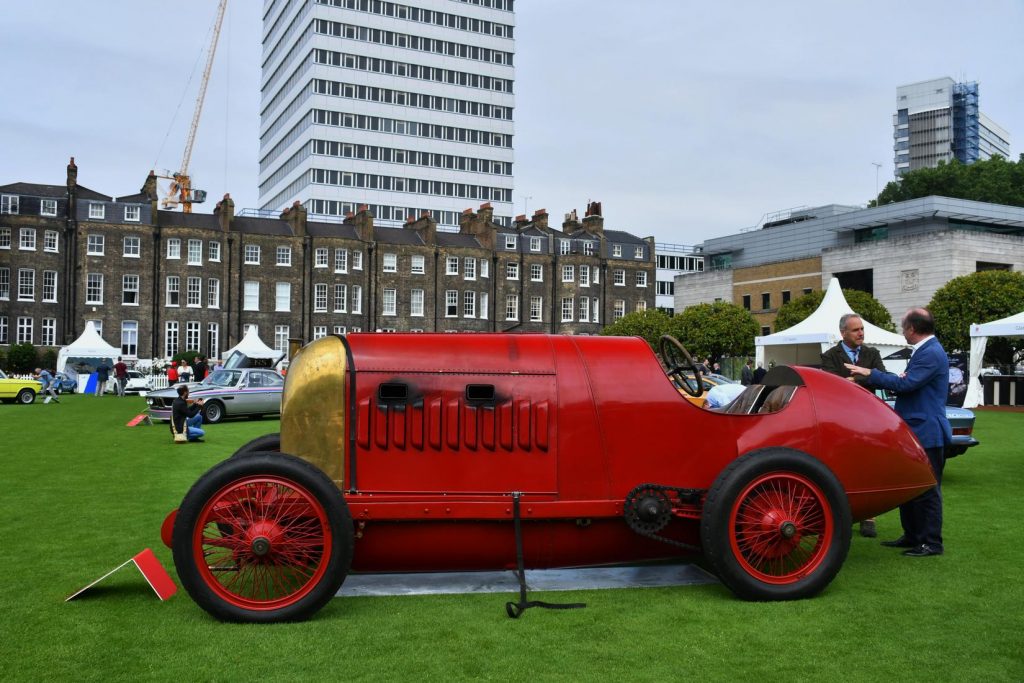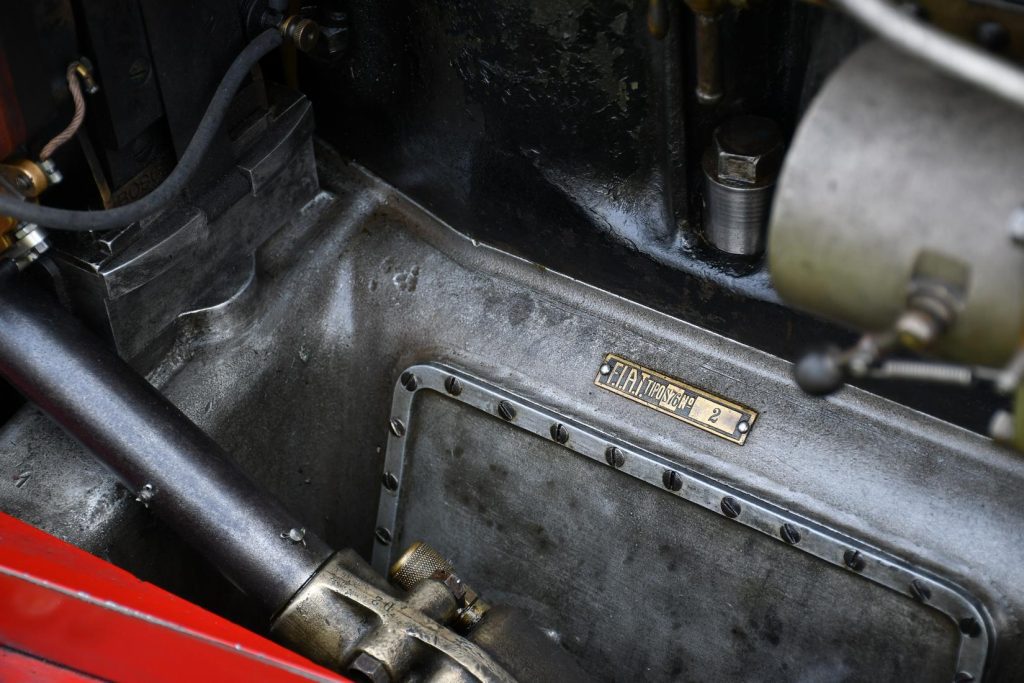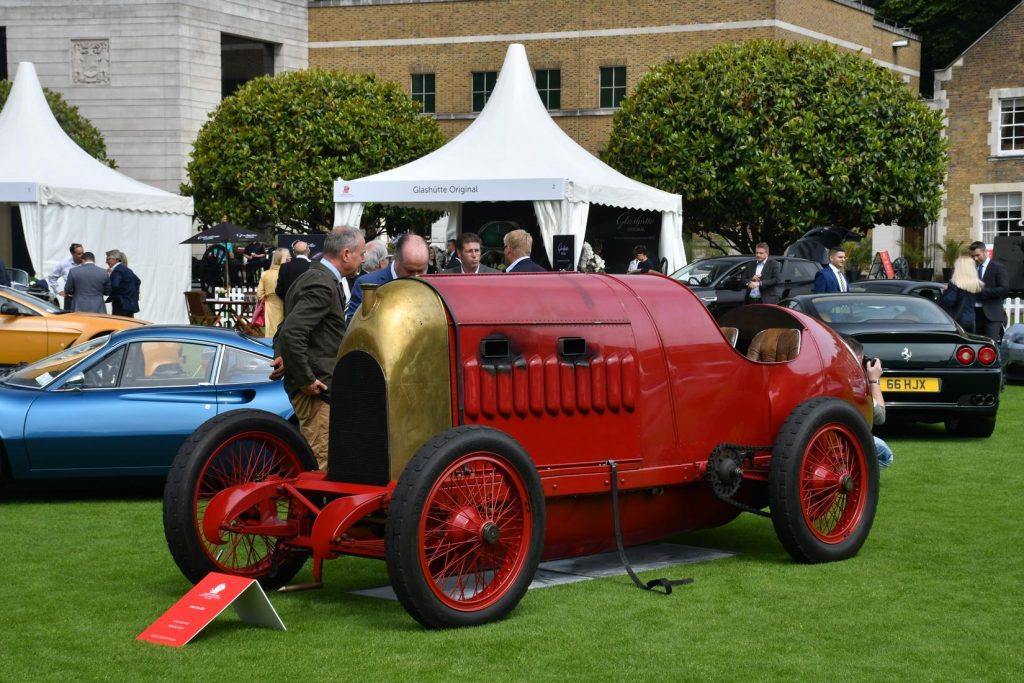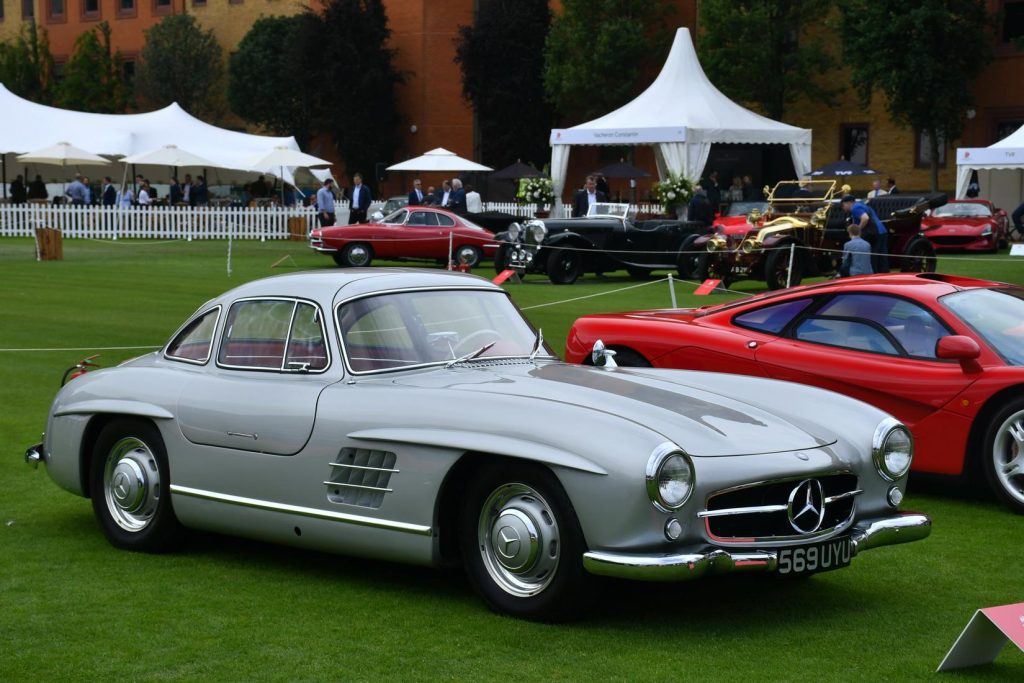10 Incredible Cars From Monterey Car Week
Photography by Kristina Cilia
Monterey Car Week is just over a month in the past at this point, and still, something about the 2021 edition just seems to have left a great feeling in the air. It may have been the return of the event after the 2020 edition was canceled, or it could have been that given the extra year, the presentation and detail of all the cars were given just that much more time to be made perfect. Whatever the reason, we’re not going to deny reveling in it.
Over the entirety of the car week, there were several cars that could have been labeled as incredible, amazing, exceptional, and the like. However, unlike other car sites out there on the internet, we kind of like the slightly more off-kilter cars here, the less-famous but still amazing cars that get lost in the myriad of Lamborghinis, Ferraris, and the like.
As such, for this list, we’re going to show you 10 incredible cars from the Monterey Car Week that you may not have given a second glance during the extensive coverage during the event. Each of these cars is special, historically important, or just plain awesome, and each really does deserve a mention.
De Tomaso Pantera
De Tomaso is a brand name that is not the first to the lips of many American automotive enthusiasts when mention is made of Italian sports cars. Founded by Argentinian-born Alejandro de Tomaso in Modena in 1959, the first decade of its existence was in building specialized racing cars, including Formula One chassis for Frank Williams. During this time, they also produced a limited number of road cars, including the Vallelunga and the Mangusta during the 1960s.
This manufacture of sports cars was enough to garner interest from Ford, after their row with Ferrari in the same decade. In 1971, Ford bought up an 84% stake in the company and started to provide V8 engines for the newest model, the Pantera.
It was during this period, from 1971 to 1974, that the De Tomaso Pantera became the hottest mid-engined sports car of the early 70s. The first year saw 1,007 Panteras sold through Lincoln-Mercury dealerships, and these first cars used a Ford 302 V8. They also had literally no rust proofing, and the manufacturing quality was, in a word, shoddy.
Therefore, in 1972, Ford became far more involved in the manufacturing side of things. A new model came from this, the Pantera GTS, which was built both as a homologation car for Group 3 regulations in Europe as well as a reinforced car to handle the new Ford Cleveland 5.8L V8 that was installed, producing 350 HP. However, for the US, the engine was tuned only to about 270 HP, and the car was still badged as just Pantera.
In 1974, America finally got the full-fat Pantera GTS, with the engine turned up to 350 HP. Sadly, this was also the final year that Ford would import the Pantera, so original 1974 Pantera GTS’s, like the ones in the pictures, are exceedingly rare to find in good condition. Ford sold back their share of the company to de Tomaso in 1975, however, they kept the engine supply deal, and provided the Cleveland, and later Windsor, V8 throughout the remainder of the Pantera’s lifetime.
What makes the De Tomaso Pantera incredible is that by 1974, you had a mid-engined, 5-speed, Italian sports car that had a gearbox from ZF and an engine from Ford. Now, as many American muscle car fans will know, the 5.8L Cleveland V8 is an absolute gem of an engine in the eyes of tuners. These days, it’s not rare to see a Pantera or Pantera GTS chucking out an easy 400 HP, which in the 1970s put them in competition with the first Lamborghini Countach models in terms of power.
Porsche 911 R
To say that Porsche has stuck to their guns regarding car design is like saying the sky is blue. So as the company from Stuttgart pushed ever onward into the 21st century, they kept adding newer and fancier tech to their 911 flagship. All-wheel-drive became the standard, semi-automatic gearboxes were introduced as options and then became the standard, and some, but not all, Porsche enthusiasts felt that the true spirit of the 911 was starting to be lost.
Then came 2016, and with it, the Porsche 911 R. A limited production series of only 991, the 911 R was everything that those same enthusiasts wanted. The car was released with a standard spec, which was rear-wheel-drive only, powered by a 4.0L flat-six that punched out 493 HP, which was coupled to the rear wheels through a 6-speed manual. The only options? You could have the radio and air conditioning deleted to save extra weight.
Without those two items removed, the 911 R was still very lightweight at 1,370 kg (3,020 lbs) and screamed to 60 MPH from a standstill in 3.7 seconds if you were precise with your shifts. This was from extensive use of lightweight aluminum in the construction of the car, as well as some bits being made out of carbon fiber. This also made it quite expensive, with each unit at $190,000.
But what it gave for that money was about as close to Porsche nirvana as the company has ever offered in the 21st century. A tail-happy, powerful, manually shifted, ridiculously fast 911 that loves the road and the track in equal measure. A 911 that flexes its muscles and shows that a rear-wheel-drive, rear-engine car can still corner so hard your head will roll off your shoulders before the rear tires give up.
That is, simply, what makes it incredible. It’s pure classic 911, but in the 21st century.
1956 Maserati A6G54 Zagato Berlinetta
We all know that throughout the 1950s and 1960s, some of the rarest, most collectible, and frankly most expensive Italian sports cars were produced. Multiple GT’s from Ferrari and Lamborghini were made, and still command attention on the auction circuit to this day. However, many overlook the contributions that a little company formed by 4 brothers, all with the last name Maserati.
The history of the A6 generation of Maserati road cars, when the company was under the management of “Commodore” Adolfo Orsi, is extensive and worthy of an entire article on its own. Suffice it to say, from 1947 to 1955, the A6 inline-six engine, in a variety of configurations, powered Maserati racing cars to multiple top finishes in road rallies, including the Targa Florio and the Mille Miglia.
Based on these successes, the 1956 A6G 2000, more commonly known as the A6G54, grand tourer was announced to the public. Under its long hood, it hid a 2.0L, triple twin-choke Weber carbureted inline-six that put out a strong 160 HP. Four body styles were offered: a three-box Carrozzeria Allemano coupe penned by Giovanni Michelotti, of which 21 were made; a Coupe and a Gran Sport Spyder by Frua, of which 6 and 12 were made respectively; and a competition-fastback berlinetta coupe, designed by Zagato, of which 20 were made.
Of them all, the Zagato Berlinetta was the best suited for racing, and many of the Zagato versions were raced by wealthy privateers in road racing events. During this time, many of these cars were damaged and needed restoration and a few were lost to crashes that damaged the cars beyond repair. A very select few, however, were never raced, and one of those models made an appearance at the 2021 Concours d’Elegance during Monterey Car Week, as shown in the picture above.
Due to the exceptional rarity of original condition cars, well maintained and only needing partial touching up and restoration work here and there, these cars are exceptionally expensive at auction, in the rare cases they are even offered at auction. In fact, during the 2018 Monterey Car Week, during the Pebble Beach auctions, a 1956 A6G54 Zagato Berlinetta that had raced in the 1956 Mille Miglia, which was the 11th overall produced and had been extensively restored, moved across the block to a new owner for $4.515 Million USD.
1934 MG P-Type Midget
The 1934 MG P-Type Midget is, for lack of a better term, “not famous.” However, it is still an incredible car because of the effect that it, along with a few other cars, had on the entirety of British sports cars throughout the following decades.
The P-Type Midget is a tiny car, with a wheelbase of only 87 inches and a track of only 42 inches. It is powered by an 847cc inline-four engine that produced a whopping 36 HP, and could scream long the English B-roads at a mind-altering 74 MPH. Okay, we’ll admit, it’s not the fastest car to ever exist in the 1930s, not by a long shot, but it was mass-produced, with just over 2,500 cars made.
While not being the most expensive or fastest sports car, the biggest effect it had came from its body profile, which was that of a long bonnet (hood), a rearwards cabin, and a very short tail. If this sounds like a recipe for pretty much every roadster produced from the 1950s onwards, that’s because it is.
Multiple cars took the profile of the Midget and put it to use, that of a short, agile car with a long hood, a short cabin, and minimal overhang. It even influenced the design of the best-selling roadster of all time, the Mazda MX-5, throughout its now 30 years of production.
This is because the Midget, in all its forms, was designed not to be the fastest in a straight line. At the time in the 1930s, English back roads were narrow and twisty, with only a few sections with decent straights, and that’s where the Midget was built to live, and is where every roadster has since.
BMW 507 Roadster
In the 1950s, BMW was enjoying immense success after restarting production after the devastation of World War 2. The 501 and 502 sedans were selling well, despite being very expensive for the average German, with most of the sales coming in the form of exports to other countries.
An importer of these BMWs for the US, Max Hoffman, had an idea of creating a US-centric model, a classically styled roadster that would show off BMW’s excellent engines, and would shame the cheap-and-cheerful MG and Triumph roadsters that were starting to gain traction with those in the sunny parts of America. After a few aborted designs, designer Albrecht von Goertz designed the BMW 503 Coupe, and the 507 Roadster.
What Hoffman had not accounted for, however, was the difficulty of making a lightweight, powerful roadster purely for export across the sea. As the aluminum body needed to be hand-hammered to shape, and then attached to the chassis. BMW’s newest engine, the 3.2L M507/1 V8, was the heart of the car and produced just about 150 HP.
Originally intended to be a mass-production, thousands-imported-per-year car, the difficulty in making the car, the massively expensive overseas shipping, and the fact that the car was meant to be a challenger to the Mercedes-Benz 300SL saw the car fail spectacularly. Intended to sell in the US at a 1950s expensive $5,000, it finally ended up on North American shores at $10,000, or just under $95,000 in 2021 dollars.
Throughout its entire lifetime, only 252 units were made from 1956 to 1959. Many people desired the car, but very few could afford it. Elvis Presley had one. Hollywood stars John Derek and Ursula Andress had one each. These were some of the highest-earning musicians and actors of their time, and even then these were expensive cars.
However, von Goertz’s design was solid, his lines were classic, and BMW quietly stashed away the design in their vaults for over 40 years, until in 1999, the BMW Z8 was revealed as a production model. Designers Henrik Fisker and Scott Lempert drew heavily from the 507, and the Z8 officially recognized the 507 Roadster as its predecessor car.
2013 Porsche 918 Spyder
Not all the cars during Monterey Car Week that are incredible are old or classic. A perfect example of this is the 2013 Porsche 918 Spyder, one of the holy trinity of high-performance, hybrid-powered supercars that cemented the term “hypercar” into the common vernacular.
Combining the howling grunt of a 4.6L mid-mounted, racing-derived V8 with the torque and immediate power of two axle-bound hybrid motors, the 918 Spyder has monstrous 887 HP on tap. Thanks to the availability of 100% torque at 0 RPM from the electric motors, the 918 Spyder launches to 60 MPH in 2.8 seconds and keeps going well beyond 200 MPH.
This performance-oriented hybrid technology was not common before 2013, with only race cars and a few concepts really fiddling around with it. But when 2013 brought us the Ferrari LaFerrari, the McLaren P1, and the Porsche 918 Spyder, the supercar landscape was changed forever.
The biggest impact that the 918 had on future developments in hypercar hybridization is that it combined both schools of thought about how to deploy hybrid power on a supercar, that of a motor attached to the transaxle, and that of a motor driving the axle alone. It also helped bring regenerative braking, something seen only on Formula 1 cars and LMP1 race cars to that point, onto the road.
Mercedes CLK-GTR
In the mid-1990s, endurance racing was in a bit of a strange place. The Group C era had ended in the early 1990s, and the Le Mans Prototype (LMP) categories had not yet been created. This left a void at the very top end of 12 hour and 24 hours races, and so the FIA created the GT1 category to both be its own type of racing, as well as the top class in endurance series.
To say that some of the most famous cars to race came out of this category is not overstating the fact. The McLaren F1 GTR, the Porsche 911 GT1, and many others were quickly developed for the new category, but none were as straight-up crazy as the Mercedes CLK-GTR. It was a car of many firsts for Mercedes, including being the first midengined car completely developed in-house, as well as carrying the most powerful naturally aspirated V12 that Mercedes-AMG had produced to date.
That 6.9L V12 put down 612 HP to the rear wheels and was mated to a semi-automatic 6-speed transmission. The body of the car was the first time that Mercedes had made the entire shell out of carbon fiber, and the safety cell was a combination of carbon fiber and aluminum honeycomb for extreme strength. This would prove to be quite valuable, as during the 1999 24 Hours of Le Mans, the CLK-GTR driven by Peter Dumbreck moved out of the slipstream of a Toyota GT-One as it crested a small hill in the track and simply took off, flipping over the guard rails into the forest beside the track.
This was discovered to be a massive aerodynamic miscalculation, as the car itself only had a coefficient of drag of 0.25, which is extremely slippery. However, with the cockpit of the car and the sealed sides of the car, it also formed the shape of a wing, hence even getting a small amount of disruptive air under the front of the car turned it from being sucked to the road to being airborne.
The CLK-GTR, then, is incredible because it showed that even in the modern age of Formula 1 and GT racing, you had to pay attention to aerodynamics. If you ever wondered why top-class endurance cars went from being relatively similar to road cars to having ducting, gaps, and small aerodynamic vents everywhere, it was to prevent another car from taking off while racing.
1965 Alfa Romeo Giulia 1300 Ti
Before the supercar era started properly with the Porsche 959 and the Ferrari F40, the ability to go down to your local car dealer and buy a “race car for the road” was a much simpler prospect. Many of the major races, including some rallies, distance races, and especially touring car races, were filled with slightly modified road cars that put up some serious competition to dedicated racing machinery.
None, however, reached the popularity and fame of the Alfa Romeo Giulia GT, and the several models that were based on it. The little executive sedan was designed with the wheels pushed out to the four corners of the car, to give cabin room. The car was light at 1,000 kg (2,205 lbs), with aluminum and steel combined to make the body and chassis. But what made it spectacular was the absolute gem of an engine under the hood.
In the Giulia 1300 Ti, the 1.3L twin-cam inline-four was fitted with a sing down-draft carburetor for 81 HP. This may not sound like much, but with the wheels out to the ends of the car and the light weight, the little Italian would corner eagerly, accelerate hard, and could even sustain powerslides that would make a modern-day drifter weep tears of joy.
The Giulia 1300 Ti is incredible because it, and its brethren, convinced Alfa Romeo to spawn one of the greatest light-GT cars ever made, the Giulia GTA. A performance powerhouse, the GTA had a 1.6L twin-cam inline-four that put out 170 HP, in a coupe version of the Giulia that was intentionally stripped of any excess weight. It dominated touring car racing for almost a decade, and it was all because the original Giulia sedans, either intentionally or not, proved to be touring car masters.
1953 Kurtis Kraft 500S
Kurtis Kraft is a name that probably only the most hardcore racing history fans know about. However, this company, founded by Frank Kurtis in the late 1930s, would have a lasting impact throughout the world of racing.
The basis of the company was to produce lightweight, affordable midget sports and racing cars that were easy to drive and were power-dense. Light weight was achieved through the use of aluminum for the chassis, and fiberglass body panels. Power-density was achieved by pairing the car with the famous Offenhauser inline-four racing engine.
Where the Kurtis 500S comes into the picture is that between 1950 and 1960, the Indianapolis 500 was part of the FIA world championship, hence the 500S (500 Sport) nomenclature. These cars were fitted with the Offenhauser 4.4L inline-four, running at a compression ratio of 15:1, which meant that it was more than a liter per cylinder and power crept up through the 700 and 800 HP milestones. In a car that weighed 820 kg (1,800 lbs) with the engine in, these little midgets turned into little rocketships.
In fact, a Kurtis 500S won the 1950, 1951, 1953, 1954, and 1955 editions of the Indianapolis 500, and almost every winner between 1947 to 1964 was powered by a “Big Offy” Offenhauser engine. What makes that incredible is that, in 1953, the Kurtis 500S cost “only” $4,985, with the engine included. To put that in perspective, that comes out to just under $51,000 USD in 2021, while IndyCars these days are worth several million dollars.
1968 Ford GT40 Mk I No 6 (Gulf Livery chassis #1074, M1 0001)
If ever there was a car that defined the ultimate in American sports car design, the Ford GT40 is that car. Low, long, and powered by either a 4.7 or 7.0L V8, the GT40 succeeded in its mission of winning Le Mans and showing one Enzo Ferrari that the company from the USA could indeed race and win on the big stage.
The FIA, which at that time controlled the regulations around endurance racing, changed the rules around engines in 1967 for 1968, no longer allowing unlimited size engines to participate in endurance racing. This caused the official GT40 program to close down, as the Mk II and Mk IV GT40s had been produced to dominate the unlimited class. However, Gulf Oil executive vice president Grady Davis had bought one of the original GT40’s, chassis #1049, and had entered as an independent for the Daytona and Sebring endurance races in 1967. When Ford shuttered the GT40 program, he saw an opportunity to make Gulf Oil very popular.
Through JW Automotive Engineering, under the management of the experienced John Wyer, Gulf Oil bought out the GT40 racing team, and all remaining chassis. By introducing a 4.9L Windsor V8 into the car, and renaming the production to Mirage Mk I, Gulf Oil was able to enter 3 GT40s as Group 4 cars into the 1968 and 1969 endurance seasons.
The changes were very minor, with a slightly raised roof that added about another inch of headroom, and the 4.9L Windsor V8 was tuned to 425 HP. Other than that, the original shape of the GT40 remained. This was also a very important car, as it was one of the first time carbon fiber, in a very rudimentary form, was used to reinforce the body shell of the car. Chassis 1074 also served as the camera car for Steve McQueen’s epic Le Mans film, and it is the only Gulf Oil car to win both as a Mirage (1967 24 Hours of Spa) and a GT40 Mk I (1968 12 Hours of Monza).
























